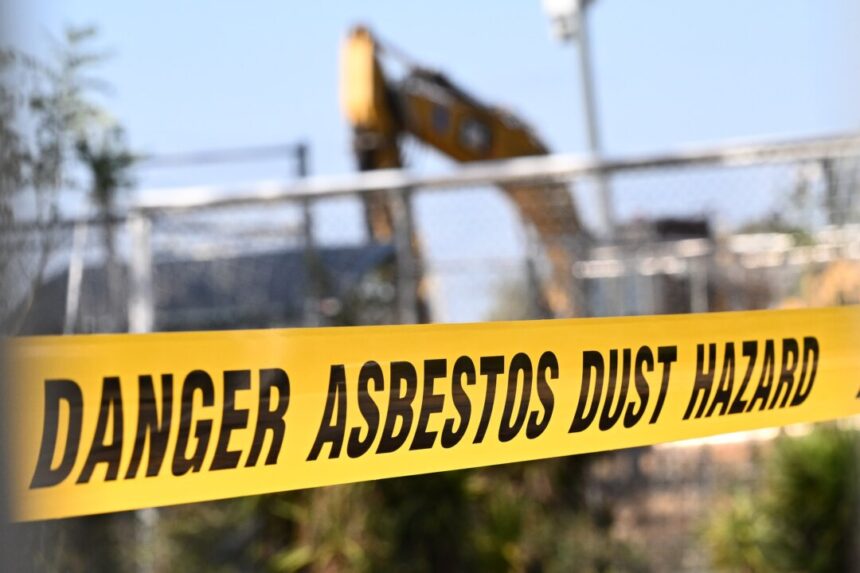The issue of deadly contamination from blue asbestos mining at Wittenoom in Western Australia has extended beyond the designated 46,000-hectare management area, according to a group. Aboriginal traditional owners are advocating for the state government to address the asbestos contamination in the isolated town of Wittenoom, which is covered in crocidolite, the deadliest form of asbestos. Despite mining operations ceasing 60 years ago, asbestos fibers have spread well beyond the Wittenoom Asbestos Management Area (WAMA), with claims that contamination has reached the Hammersley Ranges.
The situation in Wittenoom has been described as the largest contaminated area in the Southern Hemisphere, earning titles such as “the world’s most dangerous town” and “Australia’s Chernobyl.” Air monitoring has revealed extremely hazardous levels of asbestos in the air around Wittenoom, prompting calls for the state government to take responsibility for the cleanup. The Asbestos Diseases Society CEO, Melita Markey, criticized mining companies for leaving behind hazardous waste in indigenous lands, highlighting the urgent need for action in Wittenoom.
In 2021, the Banjima people presented a petition with 200 signatures to the state parliament, urging authorities to identify those responsible for the contamination and determine the cost of cleanup. The town is currently burdened with an estimated 3 million tonnes of carcinogenic mining waste piled up to 40 meters high in nearby gorges. Despite inquiries and reports conducted by successive state governments since 1978, the land remains polluted, with an estimated cleanup cost of over $150 million.
In 2022, the WA Parliament passed the Wittenoom Closure Bill, granting officials the power to acquire and demolish the town’s remaining buildings, evacuate residents, and restrict access to tourists. Concerns have been raised about asbestos spreading onto public roads during heavy rain, posing risks to visitors, miners, and residents in the area. The mining operations in Wittenoom, which spanned from the 1930s to 1966, were initially managed by Hancock Prospecting before being sold to Colonial Sugar Refinery Company (CSR).
The ongoing asbestos contamination has had devastating consequences, with over 2,000 deaths attributed to exposure to the mine. Local Aboriginal communities, such as the Banjima people, continue to live in fear of the long-term health impacts of the asbestos contamination. Efforts to stabilize the towering piles of tailings and prevent further spreading have been unsuccessful, raising concerns about contamination of water sources and the potential for mining to resume in the area.
The Banjima people are advocating for an end to mining agreements in the region and for contracts to clean up Wittenoom to be awarded to Indigenous businesses with ties to the area. The situation in Wittenoom serves as a stark reminder of the environmental and human cost of unchecked mining activities and the urgent need for comprehensive cleanup efforts to protect both current and future generations. Please rewrite this sentence.
Source link





